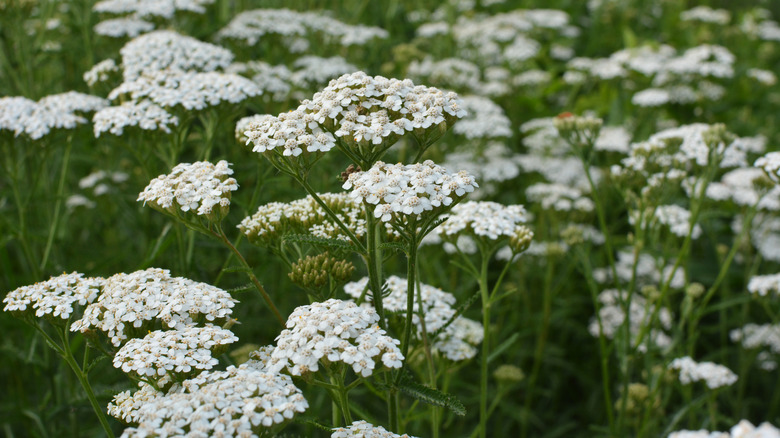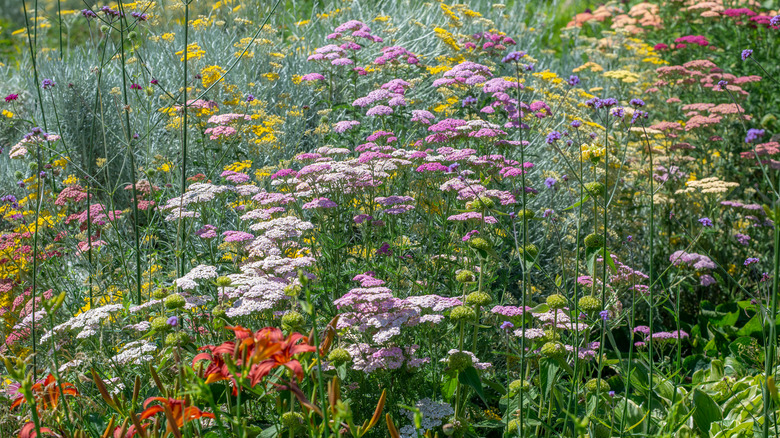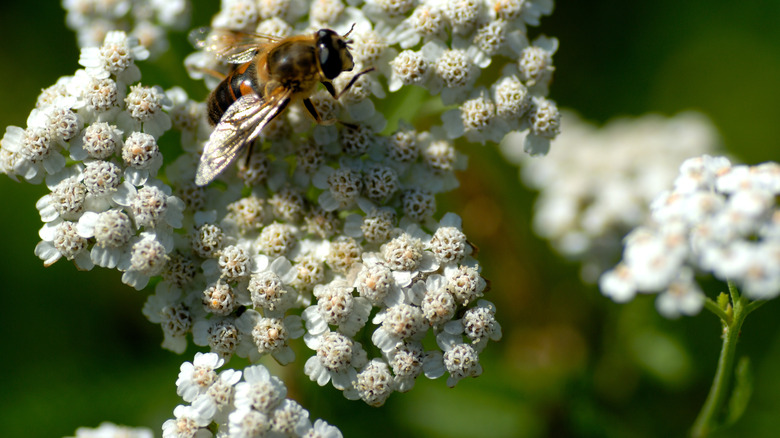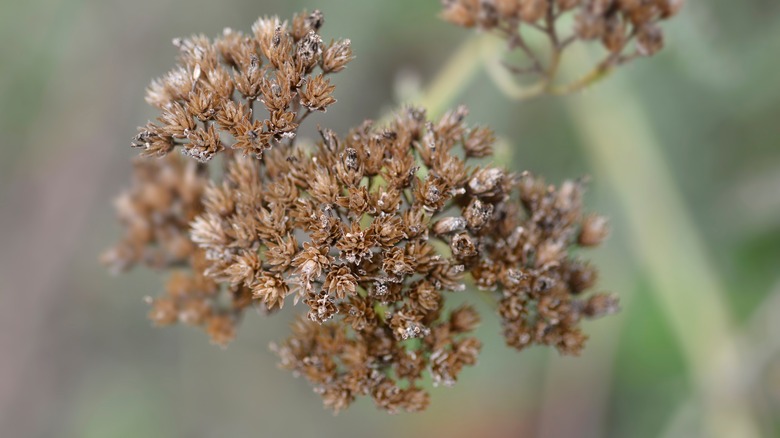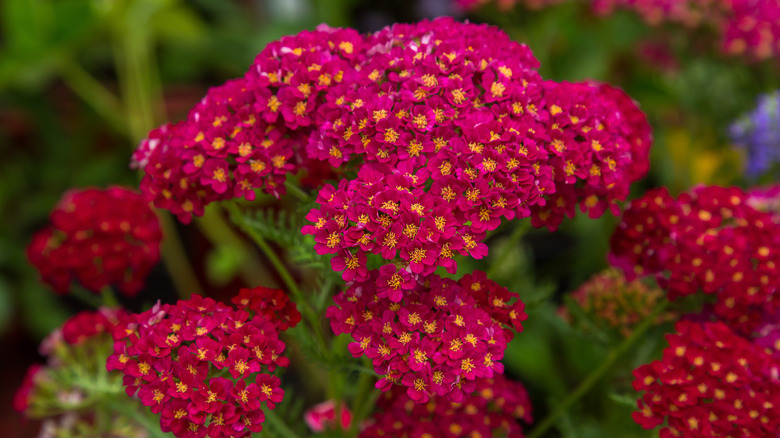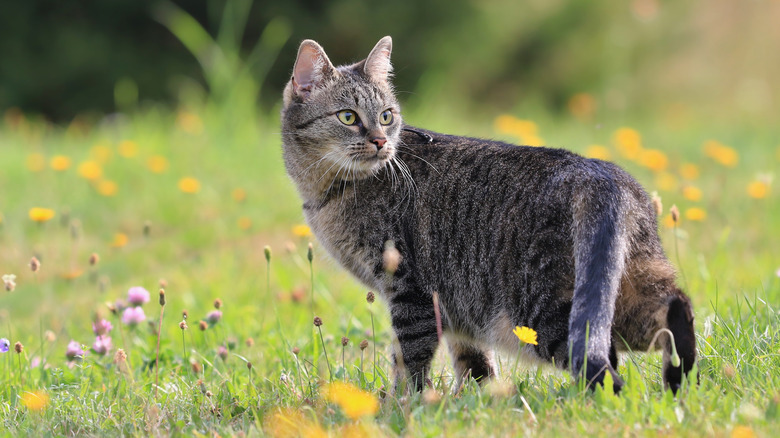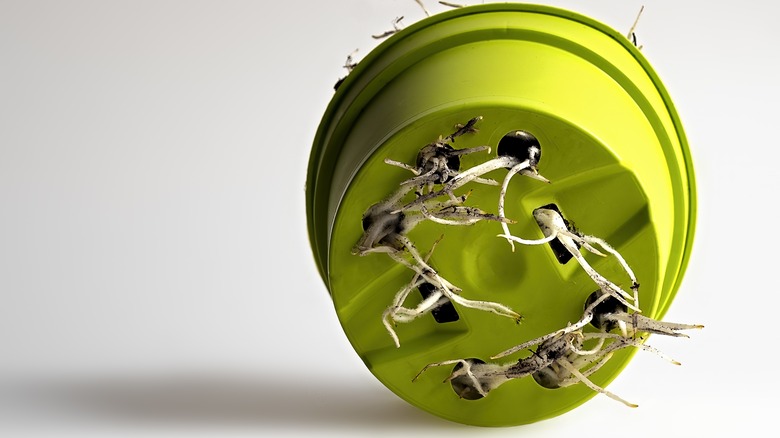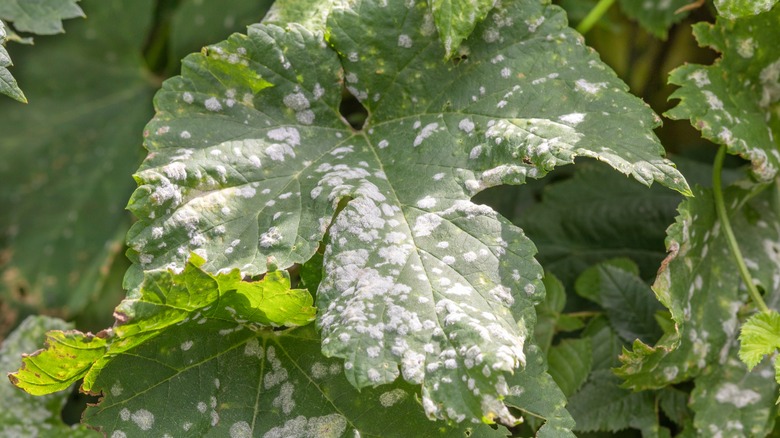How To Grow And Take Care Of Yarrow Plants
Yarrow plants (achillea millefolium) are perennial plants that can add some interest to any garden with various colors ranging from white to yellow to red. These plants are native to regions of Asia and Europe but can be found in many areas of North America as well. Yarrow plants are drought tolerant and low maintenance, making them perfect if you live in a warm climate. Reaching over three feet tall, yarrow produce colorful flower clusters throughout the summer months.
Not only do yarrow plants have beautiful flowers, but there are also many medicinal uses for this herb. For thousands of years, yarrow has been used medicinally for its anti-inflammatory properties. Clinical Herbalism discussed that the Latin name of yarrow, achillea millefolium, comes from Achilles, a Greek warrior who used this herb to help those wounded during a battle. Herbalists still use this plant for healing today, but yarrow also makes a beautiful addition to your ornamental garden.
How to use yarrow in your garden
Yarrow plants work well in just about any garden but will likely take over if left to their own devices. According to Gardener's Path, yarrow has many medicinal uses, such as treating wounds or alleviating pain and illness symptoms. Because of its therapeutic benefits, yarrow is often planted in herb gardens.
Not only is it useful to grow yarrow for medical purposes, but yarrow makes a great companion plant for your other garden plants. Because of its large root system, yarrow improves the soil quality for plants near it by drawing nutrients such as potassium, calcium, magnesium, and copper to the surface. Yarrow can also help decrease erosion problems in your garden and attract pollinators like butterflies and bees.
With their dainty and colorful flowers, yarrow works excellent as an ornamental plant. These plants work well as borders or ground covers in your ornamental garden. The vibrant colors of yarrow flowers are also great to use for cut arrangements.
How to grow yarrow
When you decide to grow yarrow in your garden, whether for your herb garden or your ornamental garden, you will probably buy a small yarrow plant. This small plant will be planted directly into your garden. If you are planting more than one yarrow plant, make sure to place the plants 12 to 24 inches apart for the best results. It's quick and easy to put yarrow plants in your garden, but you can also start the plants from seeds, which takes a bit more time and energy.
Gardening Know How explained the steps to growing yarrow plants from seeds. They recommend planting your yarrow seeds in well-draining soil indoors about 6 to 8 weeks before the last frost in your area. When you plant the seeds, make sure to only cover them slightly with soil so the sun can penetrate the soil easily and reach the seeds. Place the seeds near a window, so they get sunlight and warmth, and in 14 to 21 days, you should begin to see some growth. Once the threat of frost is gone, you can plant your seedlings outside in full sunlight.
How to care for yarrow
Once your yarrow plants are planted, they are very low maintenance. As long as they are in direct sunlight, they will grow and bloom throughout the summer. They can survive in partial sunlight, but they won't have as many blooms, so planting your yarrow in full sunlight is the best option if you want to have plenty of colorful flowers. As for watering, yarrow plants do better in dry conditions, so they don't require regular watering. Yarrow plants also don't need fertilizer because if their soil is too rich, the invasive nature of this plant will cause it to spread wildly.
Gardening Know How suggested that the primary maintenance required for yarrow plants is trimming and pruning. As flowers die throughout the season, you will need to deadhead (cut off) the dead flowers. Yarrow self-seeds, meaning if dead flower heads are left on the plant, the seeds will spread, and yarrow will take over your garden. Trim individual dead blooms from the plant throughout the season, and at the end of the season, you can prune back all the leaves. You should divide the plant every few years by digging it up, pulling apart the visible root sections, and replanting them elsewhere.
Yarrow varieties
Yarrow plants can be a beautiful addition to any ornamental garden because there are several colors, sizes, and shapes to choose from, so they pair great with many other flowers. Growing up to three feet tall, the small yarrow flowers bloom in bunches of bold colors. There are several different varieties of yarrow plants, as told by HGTV.
-
White yarrow (achillea millefolium): This is the most common variety of yarrow, with white-gray petals and an invasive nature.
-
Paprika yarrow: As the name suggests, these yarrow plants feature flowers in orange-red hues with a bright yellow center.
-
Fire king yarrow: With red blossoms, these yarrow plants can grow to be 24 to 30 inches tall and are a stand-out flower in any garden.
-
Appleblossom yarrow: This pink variety of yarrow features blooms in shades of light pink with white centers.
-
Coronation gold yarrow: Named for Queen Elizabeth II, this variety of yarrow features bright yellow petals.
Is yarrow toxic?
Since yarrow has long been used as a medicinal herb, it is safe for human consumption and topical use. However, Gardening Know How still recommended wearing gardening gloves when you are handling this plant because some people may have allergic reactions to yarrow. It's always important to take precautions to protect yourself when you are gardening, especially if you are using a new plant.
Even though yarrow is safe for humans, the same cannot be said for your furry friends, per Animal Path. Both dogs and cats will experience adverse reactions if they ingest yarrow as it is poisonous to both pets. Because yarrow is toxic to pets, it is unsafe to plant it in an area your pet has access to. If your pet ingests yarrow, they may experience diarrhea, hypersalivation, increased urination, skin irritation, or vomiting and need to be taken for veterinary attention immediately. So, if you are planting yarrow in your garden, make sure your pets cannot access it so that they are safe from harm.
How to report yarrow?
There's no denying that yarrow has beautiful blooms that bring color into your garden, but they are also aggressive growers and can take over your garden if you don't care for them properly. Therefore, many people grow their yarrow plants in pots or containers. If you choose to plant your yarrow in a pot or container, you will need to report it when it grows too large, and you can see the roots through the drainage hole.
Garden Lovers Club said that the first step to repotting your yarrow plant is preparing a large pot with sandy loam or clay potting soil. Then carefully dig the yarrow out of the original pot and divide it if necessary. Dig a hole in the new soil big enough to cover the root system and place the yarrow plant in the hole. Cover the area around the plant with more soil and water the plant. You can then place the yarrow pot anywhere in your garden with direct sunlight to add a bright pop of color to your space.
Pest issue with yarrow plants
Yarrow plants are often used in gardens because they are relatively free of disease and they deter pests such as aphids, but they aren't entirely problem-free plants, per Morning Chores. Yarrow is susceptible to pests such as spittlebugs and diseases like powdery mildew and rust. Spittlebugs produce a bubbly foam that looks like spit, hence the name, that protects them from harm. To rid your yarrow plants of spittlebugs, you need to spray them with high-pressure water or remove the spit-looking layer so the bugs are exposed to UV light and predators that will kill them. Remember to avoid using insecticides to kill spittlebugs because they will also harm other bugs, including pollinators such as bees.
A disease that affects many garden plants, with yarrow being no exception, is powdery mildew. Powdery mildew is a fungal disease that appears as white powder on your plants' leaves. If you have this issue with your yarrow plants, remove them from your garden or try using a fungicide. Pruning your plants often and watering them at ground level will also help prevent powdery mildew from spreading. Another fungal disease that yarrow is susceptible to is rust which starts as white spots on the leaves and later turns red and then black. This disease can cause leaves to fall off your plants, so trimming visibly infected leaves will help. You can also use a copper spray or sulfur powder to fix this problem in your garden.

